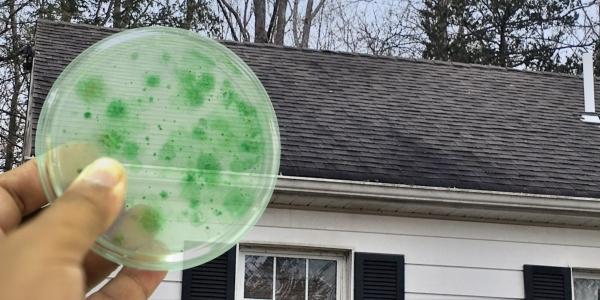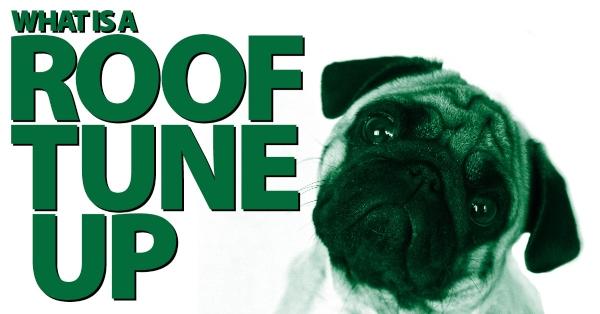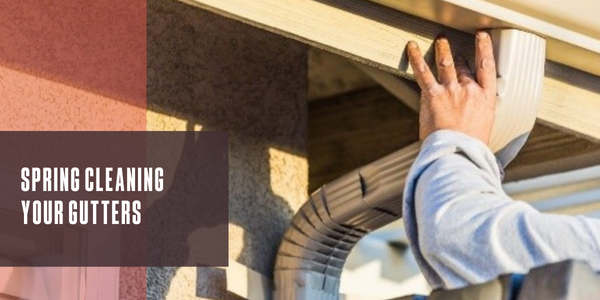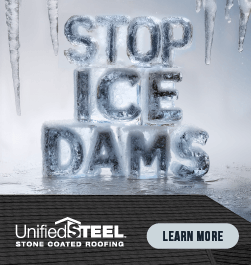How to Fight Algae and Keep Your Roof Stain Free

By Don Kilcoyne for GAF.
Have you ever wondered what the deal is with those black and brown stains on your roof? It’s algae — here is how to remove it.
Meet the microscopic pest that leaves a giant mess: blue-green algae. Many homeowners mistake these stains for mold, mildew, moss, or even tree sap. They’re often actually caused by tiny bacteria called Gloeocapsa magma, AKA “blue-green algae.” When you see the dark stains, you’re looking not at the algae, but at the hard, dark coating it generates to protects itself from damaging UV rays.
Gloeocapsa magma travels on the wind — which means if your neighbor has it, your roof has probably been exposed as well. It thrives in moist environments and can get nutrients from dust in the air. It is more likely to appear on the north and west sides of the house. According to the Asphalt Roofing Manufacturers Association (ARMA), there’s no scientific evidence that algae is damaging to asphalt shingles. Yet it can definitely affect the appearance and resale value of the home. And by darkening the roof, it can negatively impact long-term performance of highly reflective cool roofs.
That’s the bad news. The good news is that Gloeocapsa magma is both treatable and, if you plan ahead, preventable.
Treatment: A number of commercially available cleaning solutions will help remove the stains and impede algae growth for a year or more. ARMA recommends a simple 50/50 solution of chlorine bleach and water. Other cleaning chemicals or methods should not be used without approval of the shingle manufacturer; however, it is recommended that you hire a professional roofing contractor as attempting to clean your roof without proper safety equipment is extremely dangerous.
Prevention: Certain metal ions, like copper and zinc, can help prevent algae growth. Copper and zinc strips are sometimes installed at the roof ridge, where rainwater will pick up the algae-preventing ions and distribute them on the roof. This is not the most effective method, since algae doesn’t rely on rain to find moisture. In fact, it can feed on the moisture from humidity and morning dew. A more effective preventative is copper-containing granules like those found in GAF StainGuard® Shingles.
-
This technology enables the distribution of copper ions any time the roof is moist.
-
StainGuard® protection is available on many GAF Shingles in select areas, including Timberline® HD, Timberline® Natural Shadow, and Timberline® American Harvest.*
Regular roof maintenance can also help discourage algae growth:
-
Trim tree branches back to allow more sunshine and reduce debris.
-
Clear existing debris from the roof with a leaf blower or other non-abrasive method.
-
Keep gutters clean to avoid water build up.
If you’re going to the effort and expense of installing a beautiful new roof, it makes sense to protect that investment against ugly algae stains by choosing GAF shingles with StainGuard® protection.* Find out more about StainGuard® Shingles at gaf.com.
*Ten-year limited warranty against algae discoloration applies only to shingles sold in packages bearing the StainGuard® logo See GAF Shingle & Accessory Ltd. Warranty for complete coverage and restrictions.
Have a question? AskARoofer.
Find your local roofing contractor in the RoofersCoffeeShop® Contractor Directory.
Original article source: GAF













Comments
Leave a Reply
Have an account? Login to leave a comment!
Sign In